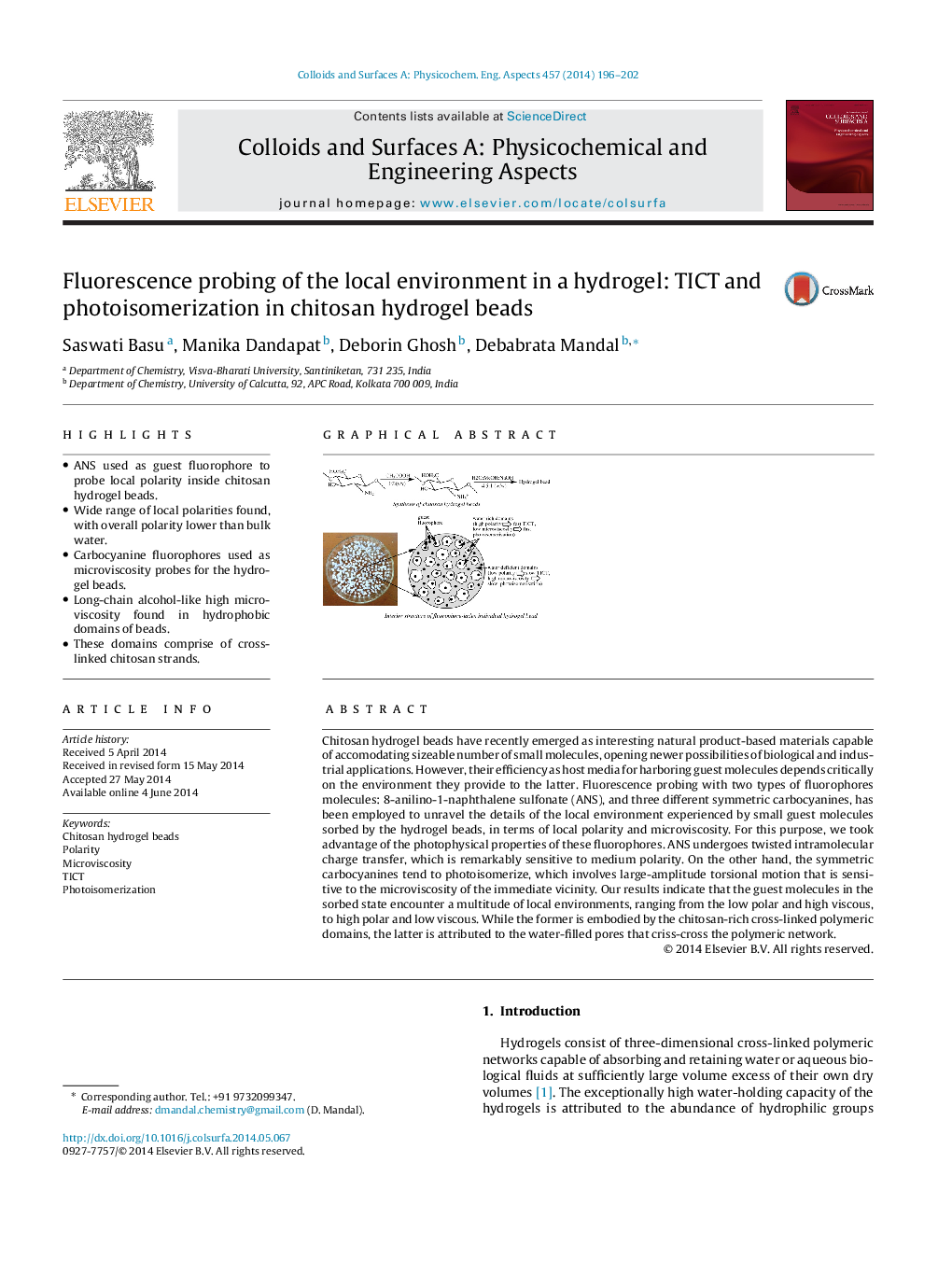| کد مقاله | کد نشریه | سال انتشار | مقاله انگلیسی | نسخه تمام متن |
|---|---|---|---|---|
| 592826 | 1453916 | 2014 | 7 صفحه PDF | دانلود رایگان |

• ANS used as guest fluorophore to probe local polarity inside chitosan hydrogel beads.
• Wide range of local polarities found, with overall polarity lower than bulk water.
• Carbocyanine fluorophores used as microviscosity probes for the hydrogel beads.
• Long-chain alcohol-like high microviscosity found in hydrophobic domains of beads.
• These domains comprise of cross-linked chitosan strands.
Chitosan hydrogel beads have recently emerged as interesting natural product-based materials capable of accomodating sizeable number of small molecules, opening newer possibilities of biological and industrial applications. However, their efficiency as host media for harboring guest molecules depends critically on the environment they provide to the latter. Fluorescence probing with two types of fluorophores molecules: 8-anilino-1-naphthalene sulfonate (ANS), and three different symmetric carbocyanines, has been employed to unravel the details of the local environment experienced by small guest molecules sorbed by the hydrogel beads, in terms of local polarity and microviscosity. For this purpose, we took advantage of the photophysical properties of these fluorophores. ANS undergoes twisted intramolecular charge transfer, which is remarkably sensitive to medium polarity. On the other hand, the symmetric carbocyanines tend to photoisomerize, which involves large-amplitude torsional motion that is sensitive to the microviscosity of the immediate vicinity. Our results indicate that the guest molecules in the sorbed state encounter a multitude of local environments, ranging from the low polar and high viscous, to high polar and low viscous. While the former is embodied by the chitosan-rich cross-linked polymeric domains, the latter is attributed to the water-filled pores that criss-cross the polymeric network.
Figure optionsDownload as PowerPoint slide
Journal: Colloids and Surfaces A: Physicochemical and Engineering Aspects - Volume 457, 5 September 2014, Pages 196–202